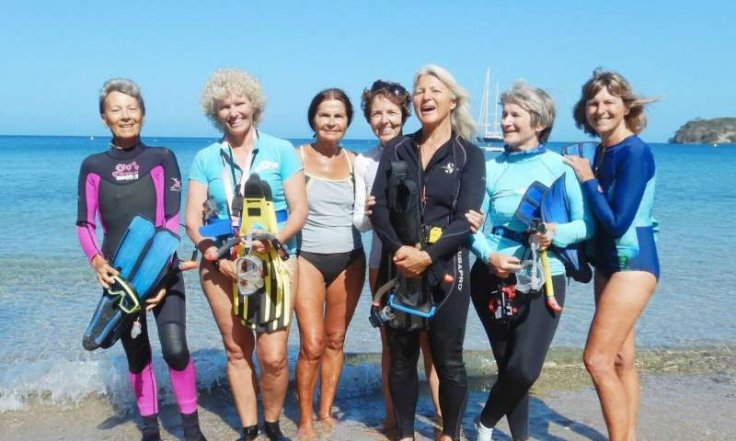
An interesting experiment was taken up by a team of snorkelling grandmothers, who helped scientists to explore marine ecology through shots of venomous sea snakes off Noumea city in New Caledonia. "The fantastic grandmothers" of seven women in their 60s and 70s decided to give a hand to scientists Dr Claire Goiran from the University of New Caledonia and Professor Rick Shine from Australia's Macquarie University. They drew up a record of sea snakes population in a swimming spot called the Baie des citrons.
Over 15 years, Dr Goiran and Professor Shine examined and documented the lives and times of a small, "harmless" species called the turtle-headed sea snake (Emydocephalus annulatus). During their first eight years they also managed to spot another species six times. This was the venomous greater sea snake (Hydrophis major) that was 1.5 metre-long. So right from 2013, they both tried to seek out his bigger and more active snakes. However, for the following three years, they saw only 10 per year.
The Fantastic Grandmother snorkelers offered to get involved in the Baie des citrons and agreed to a citizen science project. With cameras, for two years, they have been diving underwater, swimming close and getting intimate with the fascinating, potentially fatal snakes."The results have been astonishing," says Dr Goiran. "As soon as the grandmothers set to work, we realised that we had massively underestimated the abundance of greater sea snakes in the bay."
Due to some unique markings, the great sea snakes were shot and spotted in the grandmotherly photographs. In a paper just published in the journal Ecosphere, the scientists record that there are 249 snakes in that unique bay.The photoshoots have also given some new insights into the snakes' breeding patterns and offpring, which is very useful to other researchers of related projects elsewhere, says Dr Goiran.
"Remarkably," says Professor Shine, "they found a large number of lethally toxic sea snakes in a small bay that is occupied every day by hordes of local residents and cruise-ship passengers -- yet no bites by the species have ever been recorded at Baie des citrons, testifying to their benevolent disposition."
"I have been studying sea snakes in the Baie des Citrons for 20 years, and thought I understood them very well -- but the Fantastic Grandmothers have shown me just how wrong I was," she says. The incredible energy of the Grandmothers, and their intimate familiarity with 'my' study area, have transformed our understanding of the abundance and ecology of marine snakes in this system. It's a great pleasure and privilege to work with them."









